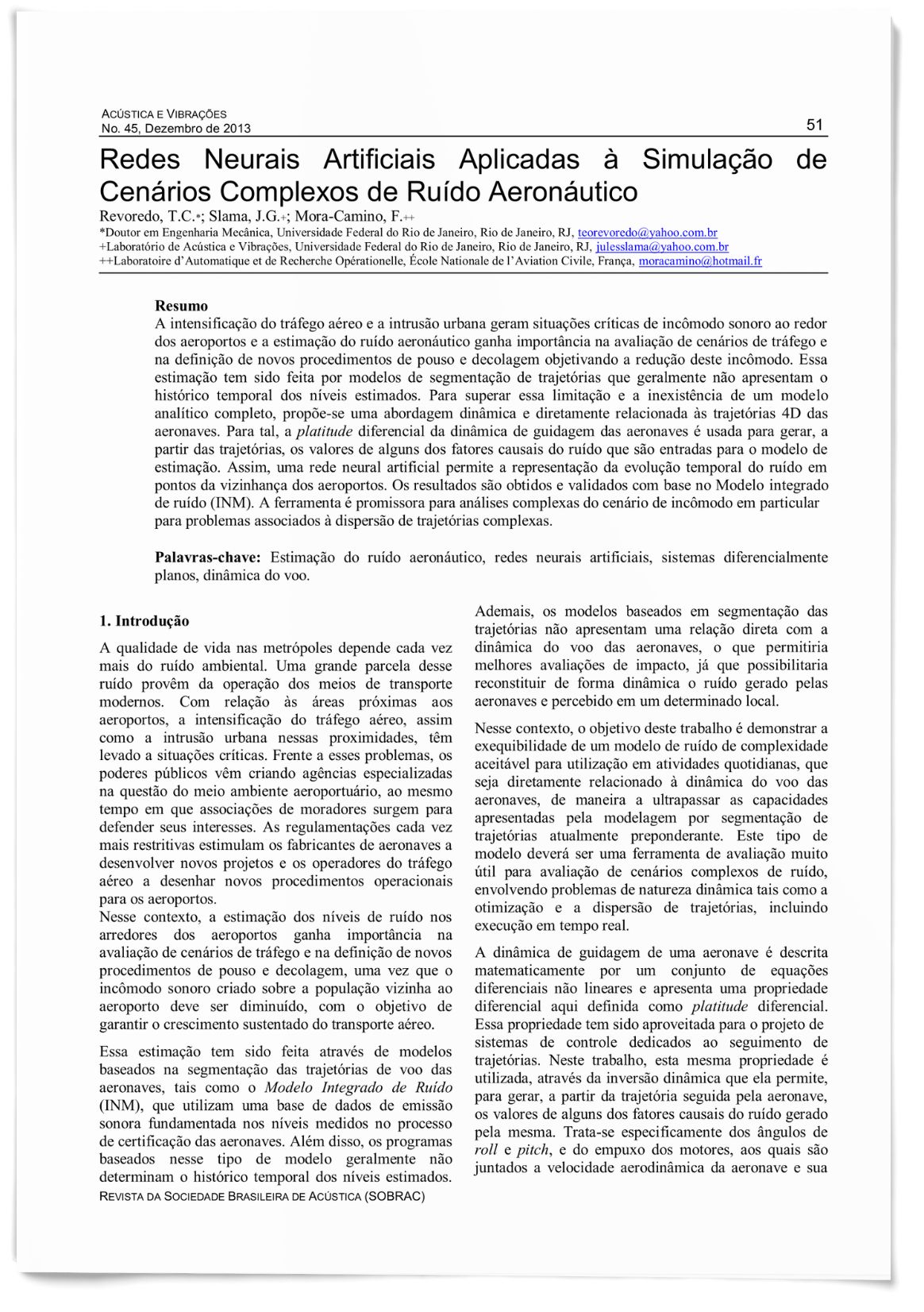Artificial Neural Networks Applied to the Simulation of Complex Aircraft Noise Scenarios
DOI:
https://doi.org/10.55753/aev.v28e45.152Keywords:
Aircraft noise estimation, artificial neural networks, differentially plane systems, flight dynamicsAbstract
The intensification of air traffic and urban intrusion generate critical situations of noise annoyance around airports and the estimation of aeronautical noise gains importance in the evaluation of traffic scenarios and in the definition of new landing and takeoff procedures aiming at reducing this annoyance. This estimation has been made by segmentation models of trajectories that generally do not present the temporal history of the estimated levels. To overcome this limitation and the lack of a complete analytical model, a dynamic approach is proposed, directly related to 4D aircraft trajectories. For this, the differential platitude of the aircraft's handling dynamics is used to generate, from the trajectories, the values of some of the noise causal factors that are inputs to the estimation model. Thus, an artificial neural network allows the representation of the temporal evolution of noise at points in the vicinity of airports. The results are obtained and validated based on the Integrated Noise Model (INM). The tool is promising for complex analysis of the nuisance scenario in particular for problems associated with the dispersion of complex trajectories.
References
CONFERENCE, E.C.A.: Document 29 – Report on Standard Method of Computing Noise Contours Around Airports – Volume 1: Applications Guide, Relatório Técnico, ECAC.CEAC, 2005.
BOEKER, E.R., DINGES, E., HE, B., et al. Integrated Noise Model (INM) Version 7.0 Technical Manual. Federal Aviation Administration, 2008.
COMMITTEE A-21, A.N., SAE AIR 1845 – Procedure for the Calculation of Airplane Noise in the Vicinity of Airports. Relatório Técnico, Society of Automotive Engineers, 1986.
FLIES, M., LÉVINE, J., MARTIN, P., et al.: A Lie-Backlünd Approach to Equivalence and Flatness of Nonlinear Systems, 1999. doi: 10.1109/9.763209 DOI: https://doi.org/10.1109/9.763209
LU, W.C.: Contribution au Suivi Automatique de Trajectoires par um Avion: Commande Plate et Réseaux de Neurones. Tese de Doutorado, Université de Toulouse II – Le Mirail, 2005.
REVOREDO, T.C.: Estimação Dinâmica do Ruído Aeronáutico Utilizando Sistemas Diferencialmente Planos e Redes Neurais Artificiais, Tese de Doutorado, Universidade Federal do Rio de Janeiro, 2011.
HAYKIN, S.: Neural Networks – A Comprehensive Foundation. Prentice Hall, 1999.

Published
How to Cite
Issue
Section
License
Copyright (c) 2013 Acústica e Vibrações

This work is licensed under a Creative Commons Attribution-NonCommercial-ShareAlike 4.0 International License.




